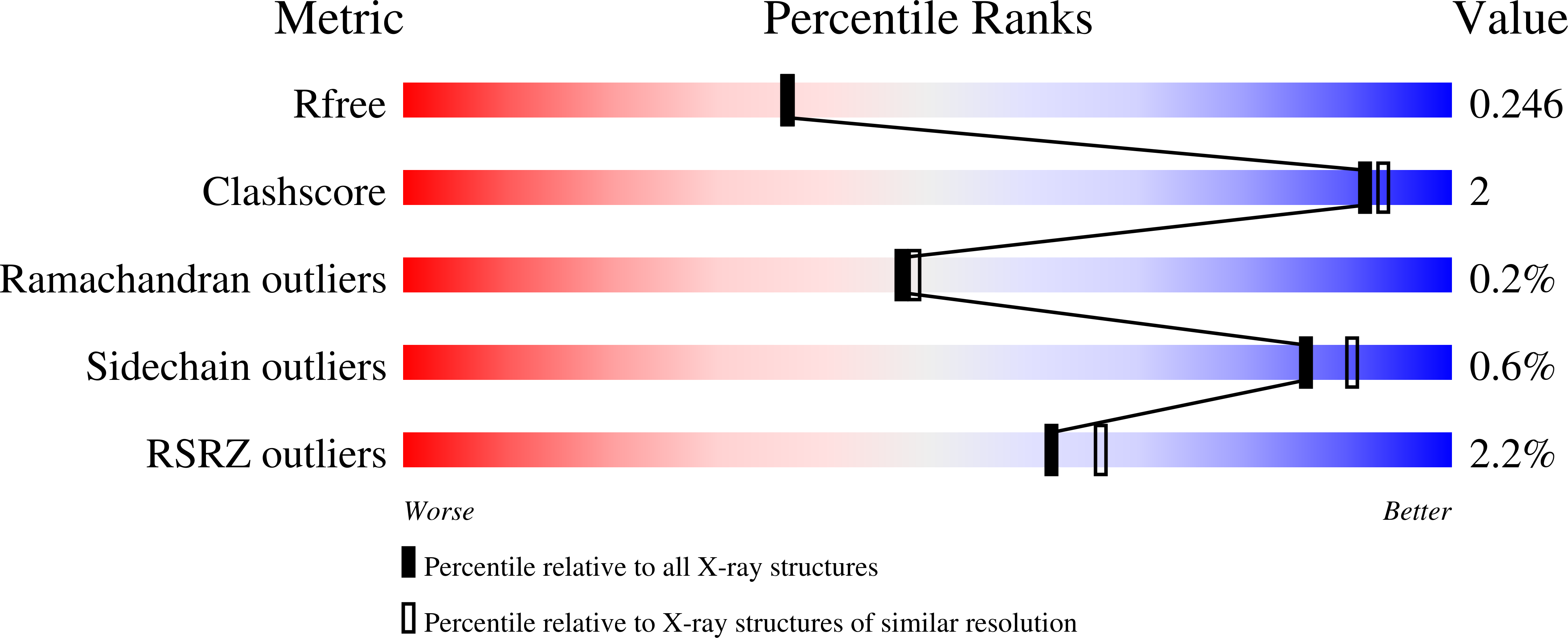Improving the thermal stability of cellobiohydrolase Cel7A from Hypocrea jecorina by directed evolution.
Goedegebuur, F., Dankmeyer, L., Gualfetti, P., Karkehabadi, S., Hansson, H., Jana, S., Huynh, V., Kelemen, B.R., Kruithof, P., Larenas, E.A., Teunissen, P.J.M., Stahlberg, J., Payne, C.M., Mitchinson, C., Sandgren, M.(2017) J Biological Chem 292: 17418-17430
- PubMed: 28860192
- DOI: https://doi.org/10.1074/jbc.M117.803270
- Primary Citation of Related Structures:
5OA5 - PubMed Abstract:
Secreted mixtures of Hypocrea jecorina cellulases are able to efficiently degrade cellulosic biomass to fermentable sugars at large, commercially relevant scales. H. jecorina Cel7A, cellobiohydrolase I, from glycoside hydrolase family 7, is the workhorse enzyme of the process. However, the thermal stability of Cel7A limits its use to processes where temperatures are no higher than 50 °C. Enhanced thermal stability is desirable to enable the use of higher processing temperatures and to improve the economic feasibility of industrial biomass conversion. Here, we enhanced the thermal stability of Cel7A through directed evolution. Sites with increased thermal stability properties were combined, and a Cel7A variant (FCA398) was obtained, which exhibited a 10.4 °C increase in T m and a 44-fold greater half-life compared with the wild-type enzyme. This Cel7A variant contains 18 mutated sites and is active under application conditions up to at least 75 °C. The X-ray crystal structure of the catalytic domain was determined at 2.1 Å resolution and showed that the effects of the mutations are local and do not introduce major backbone conformational changes. Molecular dynamics simulations revealed that the catalytic domain of wild-type Cel7A and the FCA398 variant exhibit similar behavior at 300 K, whereas at elevated temperature (475 and 525 K), the FCA398 variant fluctuates less and maintains more native contacts over time. Combining the structural and dynamic investigations, rationales were developed for the stabilizing effect at many of the mutated sites.
Organizational Affiliation:
From DuPont Industrial Biosciences, Archimedesweg 30, Leiden 2333CN, The Netherlands, frits.goedegebuur@dupont.com.






















